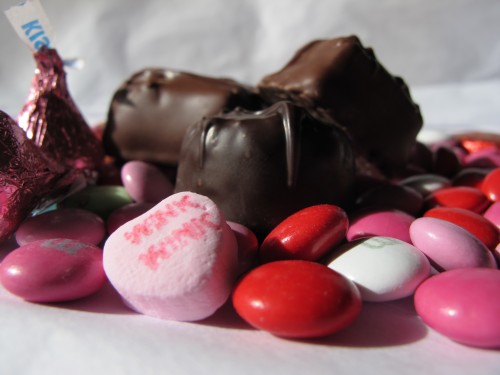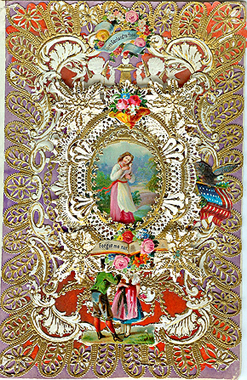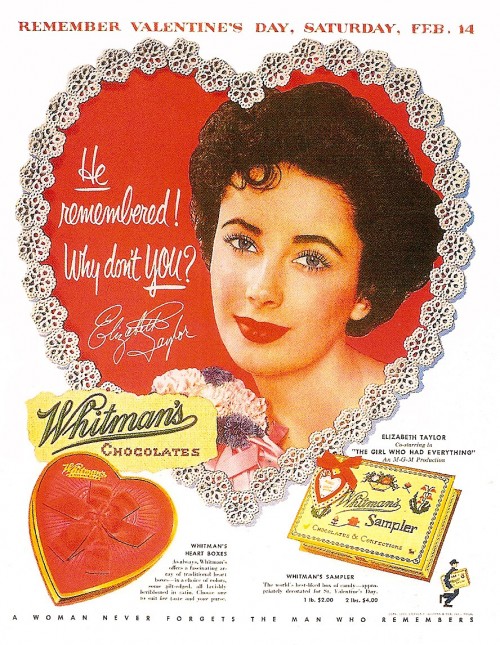Chocolate and Valentine’s Day
I remember, with some fondness, my early school days, where the celebration of Valentine’s Day was a much-anticipated event. For days before the classroom party, we labored to prepare cards by hand, with cute construction paper heart-shaped cutouts, Crayola marker designs, and patient assistance from parents and siblings. Creativity was always plentiful, and cards were often accompanied by home baked cupcakes or cookies, decorated in shades of pink and red.
As I got older, the ritual changed. A trip to our local CVS or dollar store provided little perforated Valentine’s Day cards and an afternoon or evening was spent filling out the cards in a stylized scrawl, writing the names of all the other boys and girls in class. A tiny packet of M&Ms or NECCO Sweetheart candies was attached to each card with a loop of Scotch tape, and everything was scooped into a plastic bag or a backpack to be delivered for the in-class celebration. There, we savored Hershey’s Kisses and studied Whitman’s Sampler “maps,” hunting for our favorite chocolate treasures.
In adulthood, the holiday practice morphed again. Today, store aisles and television commercials parade Valentine’s Day greeting cards, jewelry, lingerie, and candies, beginning just days after Christmas decorations are taken down. News stories and advertisements tell us that couples at different stages of intimacy carefully plan or avoid the day, and singles pine for or reject it. Only vague historical information is available, suggesting that Valentine’s Day could be a hand-me-down from pagan fertility rituals (which might have involved the flogging of women, abuse that was thought to improve their prego-potential) turned saintly feasts (with any of a number of Roman martyrs playing the role of St. Valentine). Or that it is a creation of Geoffrey Chaucer’s poetry (from the late 1300s “Parlement of Foules”), Esther Howland’s entrepreneurial card-crafting (from the mid-1800s “Mother of the American Valentine”), and Richard Cadbury’s first Valentine’s Day box of chocolates (from the late 1800s in Britain).
Sweets, especially chocolate, are integral to the holiday. Chocolate swirls throughout the celebration, its many meanings taking hold. Is chocolate important to Valentine’s Day because it is a psychoactive food? Many studies reveal its emotion-influencing properties, the result of inherent pleasure-stimulating chemicals. Is it important because women want it and men want to benefit from its aphrodisiac “powers?” While women are usually the primary buyers of chocolate, a widely cited statistic suggests that men compose 75% of Valentine’s Day buyers. Is it important because it is a source of huge profit for the chocolate industry in the United States and Western Europe, now even more profitable because it has increasingly scaled internationally, with Valentine’s Day bringing in higher profits from Ghana to India to Russia? February 14th is considered the third most important holiday for chocolate sales after Halloween and Easter, with US sales estimates in the hundreds of millions of dollars.
Valentine’s Day is far from the pure, perfect celebration of love that romantics would have it be. As fun as those early exercises of our childish notions of love sometimes were, and as tasty, there were a number of angst-ridden complications every year. Bullying (“Timmy doesn’t have Teenage Mutant Ninja Turtles valentines! What a loser!”) and rejection (“I didn’t get her one because she’s stupid!”) were common, especially as we got older and crueler. For nearly a week, we ate far too much candy, rotting our teeth and continuing on the path toward obesity and Type 2 diabetes that might very well define our generation’s health. Most of our thoughtful store-bought valentines quickly made their way to the town dump. Images of Cupid and pop culture icons filled our sugar dazed minds and we found ourselves mired deep in the swamp of tiny people politics. Modern day Valentine’s Day celebrations for adults present many of the same tensions as did those early ones. Only now adulthood allows us the luxuries of general romantic malaise and Anti-Valentine’s Day dissent (“Cupid must die!” “Happy V.D.!”). And any good bargain hunter, holiday lover or hater, knows that the best day to buy chocolate around the holiday is actually February 15, when everything goes on sale.
For better or worse, chocolate, love, sex and gender roles, and profit potential are inextricably linked with this holiday. Whether people see Valentine’s Day as warm and heartfelt or as saccharine and insincere, anyone producing, purchasing, selling, or consuming chocolate is implicated, both in the holiday and in the chocolate industry more broadly. Their lives briefly but momentously intersect with all of the other lives touched by that chocolate. And heartbreakingly, where there is chocolate decadence, there is too often chocolate atrocity brought on by the cruel and unequal conditions that remain a part of our world.
Together, I hope that we can explore the good and the bad, the ideal and the immoral, in the lives of all those who enjoy “the food of the gods,” with the ultimate goal of making informed, ethical decisions about the chocolate that we eat.
The Beatles’ (tongue-in-cheek) all-too-appropriate ode to hippyism, expressive slogans, and mass populace organizing, “All You Need Is Love”:




